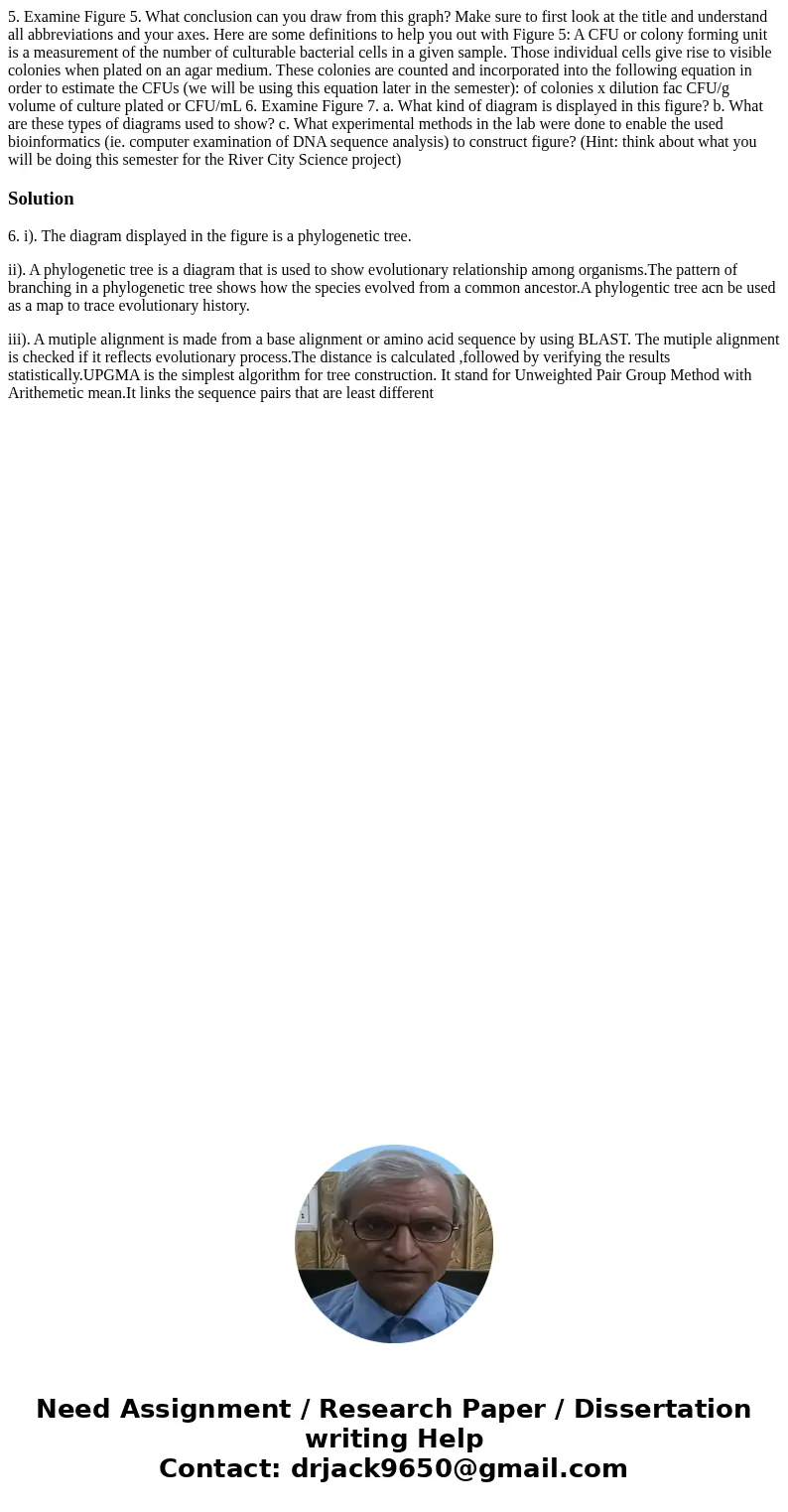5 Examine Figure 5 What conclusion can you draw from this gr
5. Examine Figure 5. What conclusion can you draw from this graph? Make sure to first look at the title and understand all abbreviations and your axes. Here are some definitions to help you out with Figure 5: A CFU or colony forming unit is a measurement of the number of culturable bacterial cells in a given sample. Those individual cells give rise to visible colonies when plated on an agar medium. These colonies are counted and incorporated into the following equation in order to estimate the CFUs (we will be using this equation later in the semester): of colonies x dilution fac CFU/g volume of culture plated or CFU/mL 6. Examine Figure 7. a. What kind of diagram is displayed in this figure? b. What are these types of diagrams used to show? c. What experimental methods in the lab were done to enable the used bioinformatics (ie. computer examination of DNA sequence analysis) to construct figure? (Hint: think about what you will be doing this semester for the River City Science project) 
Solution
6. i). The diagram displayed in the figure is a phylogenetic tree.
ii). A phylogenetic tree is a diagram that is used to show evolutionary relationship among organisms.The pattern of branching in a phylogenetic tree shows how the species evolved from a common ancestor.A phylogentic tree acn be used as a map to trace evolutionary history.
iii). A mutiple alignment is made from a base alignment or amino acid sequence by using BLAST. The mutiple alignment is checked if it reflects evolutionary process.The distance is calculated ,followed by verifying the results statistically.UPGMA is the simplest algorithm for tree construction. It stand for Unweighted Pair Group Method with Arithemetic mean.It links the sequence pairs that are least different

 Homework Sourse
Homework Sourse